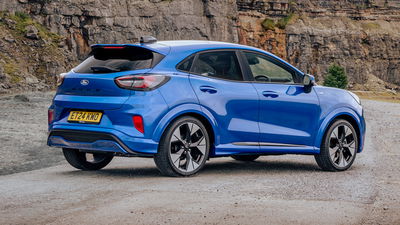Why The Bugatti EB110 Is A Proper 90s Hero Car
The name Bugatti is now so synonymous with the record-breaking Veyron that it's easy to forget the massive heritage behind the marque. Automotive artisan Ettore Bugatti founded his company in 1909 and went on to build some of the greatest cars of the inter-war era. The Type 35 dominated Grand Prix racing during the second half of the 20s, taking over 1000 wins. The Type 57 was the 30s equivalent of the Ferrari F12 and won Le Mans twice.
Ettore died in 1947. His eldest son Jean, a brilliant technician himself, would have taken the company over, had he not been killed testing a Type 57 race car in 1939. Jean's death marked the beginning of the end for Bugatti. World War Two broke out a few months later, and the company never recovered from Ettore's death. It folded in 1952 but re-emerged in 1987 when Italian car dealer Romano Artioli bought the rights to the Bugatti name.
Artioli was a romantic and a dreamer with a vision of building the fastest, most exotic, most luxurious supercar in the world. Controversially, he set his new company up in Italy - though Ettore was Italian by birth, he was a French citizen and based Bugatti in France. Artioli built a cutting-edge factory and hired Marcello Gandini - the mastermind behind Lamborghini's Miura and Countach - to design his car.
The Bugatti EB110 GT was unveiled on 15 September 1991, the 110th anniversary of Ettore's birth (hence EB110), at an incredibly lavish launch party in Paris. It generated a lot of excitement about the revival of the Bugatti brand and the centre-piece was the car. But did it achieve Artioli's goals?
Was the EB110 the most luxurious supercar? With a herd of the finest cows and a small forest of exotic trees sacrificed to make the interior, it was. And it had electric everything. And it was quiet and refined. Even if the wastegates sounded like they were going to suck your eardrums out.
Was the big Bug the most exotic? The engine was certainly full of all sorts of expensive metals, but it was all underpinned by a carbonfibre chassis. And because the EB beat the McLaren F1 into production, it is the first car to be so equipped. The suspension was a fairly conventional all-double wishbone set-up, but it put the power down via a six-speed gearbox to all four wheels. Which hadn't been done in a car of this type before.
And was it the fastest? Well, it had a 3499cc V12, with 60 valves and double overhead camshafts per bank. And four turbochargers. That was enough for 553hp. It couldn't quite out-drag the Jaguar XJ220 from 0-60mph, the Jag's 3.6 seconds besting the Bug's 3.9secs. But it did just squeak through with a faster top speed, managing 214mph to the XJ's 212mph (the Jag later achieved 217mph, but in modified form). The later SuperSport model, with 603hp, managed 0-60mph in around 3 seconds and a top speed of 216mph.
Delays meant that production didn't begin until late 1992, right in the middle of a recession. Which doesn't sit well with a half-a-million dollars price tag. Talk of chic Bugatti-themed boutiques and hotels couldn't mask the fact that sales weren't coming in. There was a brief spike in interest when a young, soon-to-be-champion Michael Schumacher bought a SuperSport in 1994. But a privateer team of two EB110's failed to make the finish at that year's Le Mans 24 Hours.
By 1995, Bugatti was in serious trouble. Despite (often vicious) rumours about possible investors, in reality most of the money was Artioli's own. The profits from his hugely successful Suzuki concession were shrinking rapidly thanks to a weak Yen and he overstretched himself with Bugatti. He bought Lotus from General Motors in 1993 to develop a smaller model and was part-way through a new saloon when the company folded in September '95. Just 125 EB110s had been sold.
Even though everything else was auctioned off in 1997, Artioli still kept hold of the rights to the Bugatti name. In '98 he sold it to Volkswagen Group who went on to build the Veyron. A car with remarkably similar goals and specifications to the EB110. Would the Veyron exist without the EB110? Who knows. But the Veyron has restored the Bugatti brand as the pinnacle of the motoring world. Which is all Artioli set out to achieve.













Comments
No comments found.